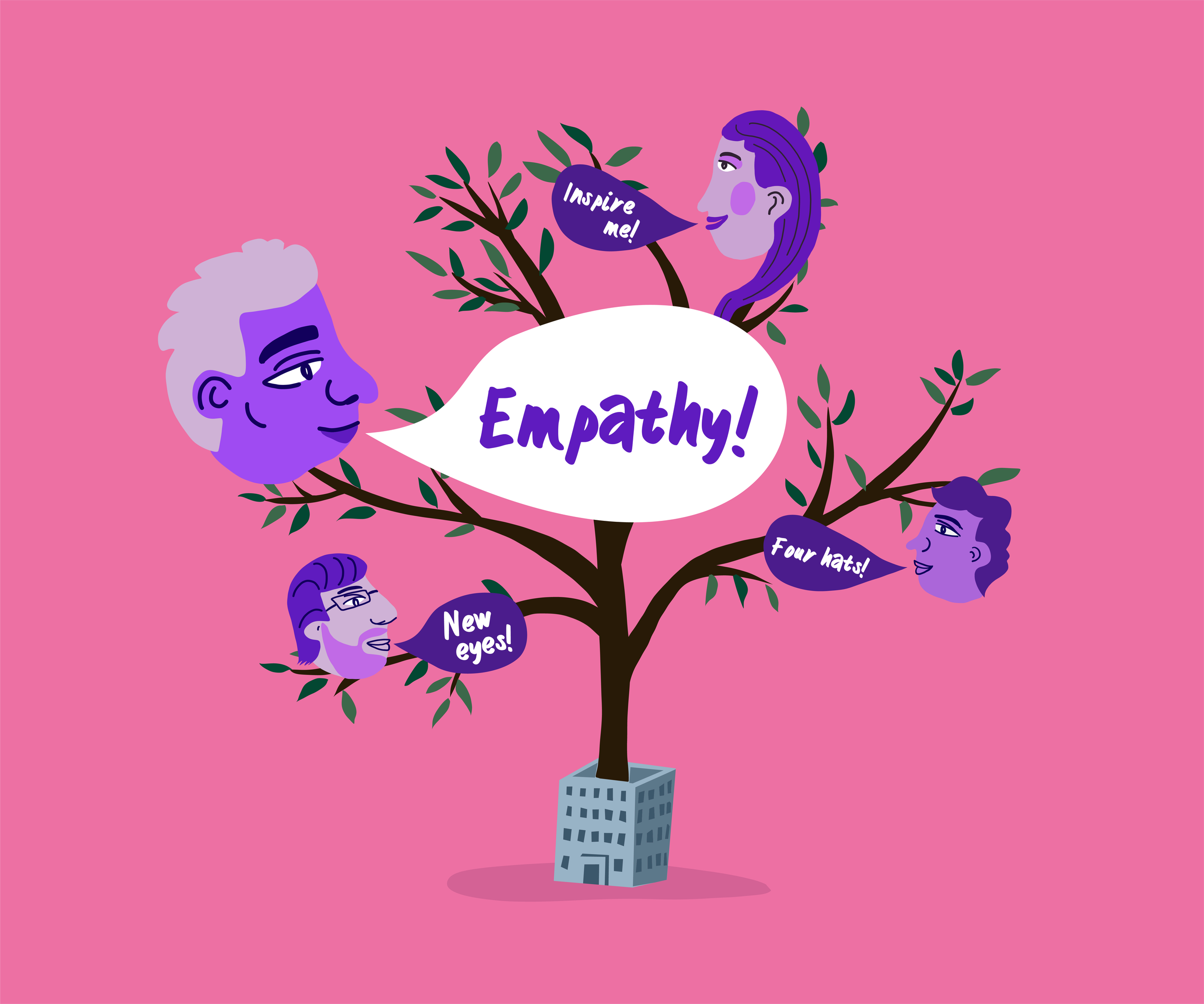4 - Three stages of Empathy
By Kate DowlerEmpathy is frequently cited as a key design thinking skill, but what’s the psychology behind it, and how does knowing this help us use empathy more effectively during the creative journey?
The word empathy first appeared in the English language over 100 years ago; from the German word einfühlung, which means “feeling into”. Originally, it was used to refer to the ability to mentally “get inside” works of art, to have a first-person experience from the object’s perspective. Today, it’s more commonly used to describe our ability to connect with another person’s experience – to understand it and feel it as if it were our own.
Our capacity for empathy is one of the features that defines us as human so, as you’d expect, it plays a central role in design thinking, which is founded on understanding and responding to the needs of users.
Whilst user research is the obvious place to leverage the power of empathy, there are other important points in the creative process where it can be harnessed, from driving creativity to influencing internal decision-making.
But let’s first rewind to look at the psychology of empathy in a bit more detail….
How empathy works
There are three distinct psychological processes that come together to produce the empathic state
1. The ability to understand what is going through someone else’s mind (mentalizing)
2. The ability to imagine the experience as if it were our own (affect matching)
3. The desire to act – for example, wanting to comfort someone who is in pain (empathic motivation)
(For more on the psychology of empathy, read Matthew Lieberman’s excellent book: Social, Why our brains are wired to connect)
So, how do each of these processes relate to design thinking?
Ability to Understand
Design researchers spend a lot of time with users, where empathy is key to gain a deeper understanding of a user’s mental and emotional state. Being empathetic helps to establish rapport and trust, and helps us dig deeper into more emotional and/or sensitive subjects by knowing which questions to ask and how to ask them.
In this scenario, we’re predominantly using the Mentalizing process. Understanding is the core aim, and any emotional response we have as researchers (during affect matching) needs to be checked to make sure we are mirroring the respondent’s state of mind and not projecting our own interpretation. Asking more questions to explore our assumptions and hypotheses is important here to build the full picture.
Imagine the Experience
Design research also has an important role to play in inspiring creativity. Being able to imagine the experience of a user as if it were our own (the affect matching component), is a powerful way of connecting with user needs whilst indirectly experiencing them for ourselves and therefore driving a more relevant creative response.
Try-it-yourself (getting the team to trial the target product or service as an immersion exercise) and experiential role play (the same thing, but whilst role-playing the target user and simulating the context of use) are common methods used by designers to quickly gain empathic insight.
There are also more subtle techniques we can use to encourage creative teams to build empathy with a particular user group at a subconscious level - I like to call this empathy by stealth! For example, during a creative workshop, we can supplement techniques such as persona building with more subtle cues that prime people to subconsciously get into the mindset of the target user. The workshop setting, the pace of the session, the language we use and the behavioural rules we set can all contribute to making the creative team behave more like the target user without realising it.
(For more on the power of priming and how it influences our subconscious behaviour – read my earlier article: Fast and Slow [Design] Thinking)
Desire to Act
The third psychological component - empathic motivation, leads us to emotively respond or act directly as a result of our empathy. Ensuring insights from user research are acted on, and ideas are progressed through the business are key challenges for many of our clients. Gaining a better understanding of internal stakeholders can help us devise effective strategies to influence decision-making, including more emotive arguments which drive decision-makers to act.
This strategy of using empathy to influence decision-making is also known as instrumental empathy, an approach widely used by campaigners and activists to influence the beliefs of people and groups who have very different, and sometimes opposing views.
As an example, we recently brought to life a range of future scenarios for a client to demonstrate what might happen if they decided not to invest in a new technology, in order to demonstrate the risks of inaction in a more visual and immersive way. This approach also helped us to overcome various cognitive biases that make people more risk-averse and less likely to act when they should (omission bias, status quo bias, loss aversion to name a few).
In summary…
Empathy is a really useful tool throughout the design thinking process. Understanding the psychology of empathy helps us identify exactly how to use it at different points in a project - from uncovering insight to generating ideas to making sure our work has impact.

